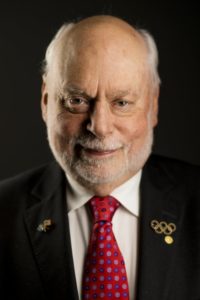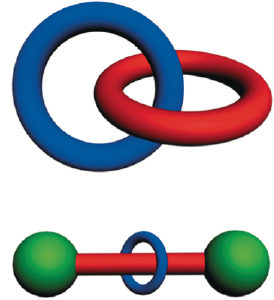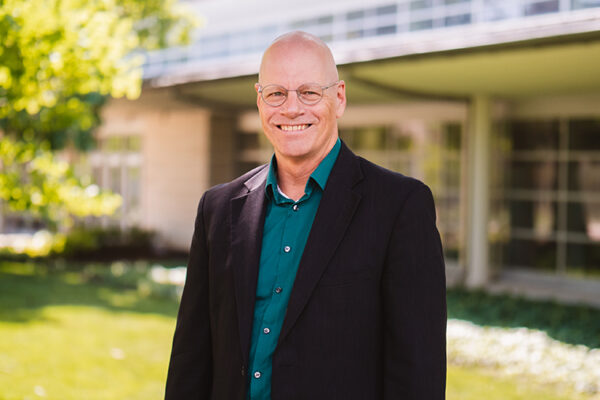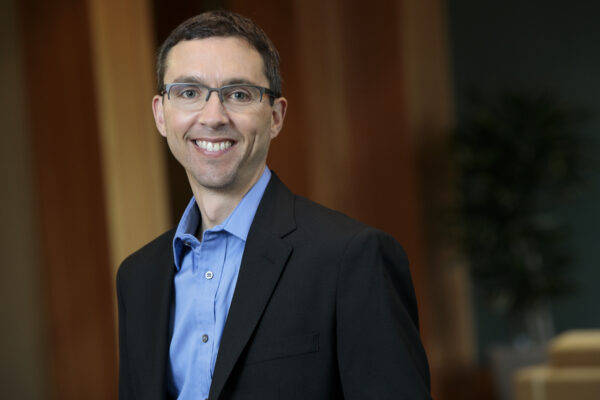
Nobel laureate Fraser Stoddart, the Board of Trustees Professor of Chemistry at Northwestern University, will deliver the 2018 Weissman Lecture Oct. 4 at Washington University in St. Louis.
The lecture, titled “Engines Through the Ages,” will begin at 4 p.m. in Graham Chapel on the Danforth Campus, followed by a question-and-answer session from 5:15 -6:15 p.m. Sponsored by the Department of Chemistry in Arts & Sciences, the lecture is free and open to the public.
“Engines Through the Ages” will journey into the mechanical innovations realized during the early and mid-20th century, followed by discussions revolving around a new type of bonding in molecules consisting of mechanical linkages pioneered by Stoddart and fellow Nobel laureate Jean-Pierre Sauvage, which they used to control large amplitude motions in nanoscale mechanically interlocked molecules — such as catenanes and rotaxanes.

Stoddart will describe a blueprint for constructing molecular shuttles, switches and machines — setting the stage for the production of artificial (synthetic) molecular pumps capable of storing multiple highly charged molecules.
Fundamental research
Born in Edinburgh, Scotland, during World War II, Stoddart learned the value of hard work growing up on Edgelaw Farm, about a dozen miles south of Edinburgh. From there, he attended the University of Edinburgh, where he attained BSc (1964) and PhD (1966) degrees in chemistry. He also was awarded a DSc degree by Edinburgh in 1980 for his research into stereochemistry beyond the molecule.
Stoddart’s varied academic career has brought him from the United Kingdom to Canada to Los Angeles. Most recently, he joined the faculty at Northwestern University in 2008, where his primary research group resides, although he now holds a part-time appointment at the University of New South Wales in Sydney.
In honoring Stoddart with the Nobel Prize for Chemistry in 2016, the committee noted: “We can imagine that the components of the smallest machines could be molecules. For a machine to function, its parts must be able to move relative to each other. Fraser Stoddart has contributed to the development of molecular machines, for example by developing a ‘rotaxane’ in 1991. A ring-shaped molecule was threaded over another molecule that functions like an axle. In the future, molecular machines could be used for new materials, sensors, and energy storage systems.”
In a profile of Stoddart and his co-prize recipients for the Proceedings of the National Academy of Sciences, Jonathan Barnes, assistant professor of chemistry in Arts & Sciences, and co-author Chad Mirkin of Northwestern University wrote, “At the very least, these men introduced a fundamentally new way of constructing molecular matter at the nanoscale, and at the very most they laid the groundwork for a new field focused on using such capabilities to realize complex interlocked molecules with extraordinary functions we typically equate with macroscopic machinery.”
About the Weissman Lecture
The lecture honors Samuel I. Weissman, a Washington University faculty member from 1946 until his death in 2007. Weissman was recruited to Los Alamos in 1943, where he worked on the atomic bomb, an accomplishment about which he was later deeply ambivalent.
In 1946, Weissman joined the Washington University faculty with five of his Los Alamos colleagues, who together formed the core of the modern chemistry department. Here, he soon turned to the brand-new field of magnetic resonance, in which he was to become a renowned pioneer and world-class expert. A scientist to the core, Weissman did creative research until virtually his last days at the age of 95. Weissman was a member of the National Academy of Sciences.
For more information about the lecture, contact Mary Stewart at marystewart@wustl.edu or by phone at 314-935-6593, or Barnes at jcbarnes@wustl.edu.




Comments and respectful dialogue are encouraged, but content will be moderated. Please, no personal attacks, obscenity or profanity, selling of commercial products, or endorsements of political candidates or positions. We reserve the right to remove any inappropriate comments. We also cannot address individual medical concerns or provide medical advice in this forum.